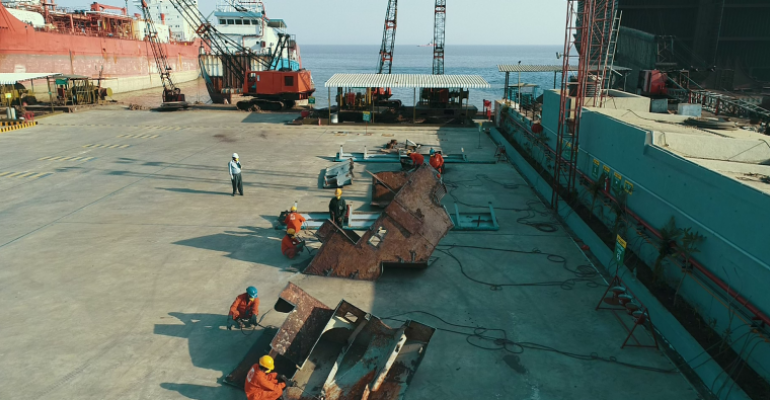The IMO’s measures, EEXI and CII, are designed to reduce emissions from existing ships as a contribution to shipping’s overall decarbonisation process. However, due to enter force in January, they could result in exactly the opposite the demolition expert argues.
In an opinion piece released by GMS this week, the engineer, who holds a Masters in Environmental Engineering from the Indian Institute of Technology Guwahati, refers to an estimate “from one engine manufacturer” that more than 80% of bulk carriers and containerships will be in the lowest C, D, and E categories of CII by 2030 if no action is taken, thereby damaging their commercial viability.
Owners of ships classed in D and E will have to take remedial measures to improve their vessel ratings. The CII itself will become steadily stricter over the second half of the decade.
However, although the ships may not fare well in carbon emissions terms, recycling what Hiremath describes as ‘vintage assets’ earlier than otherwise would have been the case will create demand for replacement ships.
Ship construction is a carbon-intensive business, particularly in terms of steel requirements but also in the building of many other ship components, as well as coatings and other processes. Replacing the vintage assets could actually result in higher carbon emissions.
The fear is that some owners of vintage assets may well choose to scrap their vessels rather than invest in carbon reduction measures that might achieve a payback, especially in a weak market. Hiremath asks: “Is scrapping the only commercially feasible option for vintage assets which fall foul of the new regulations. Taking a holistic approach,” he said, “looking at the vessel’s full life cycle assessment, is there a case for extending the life of older vessels, rather than consigning them to the scrap heap?”
His comments come amid mounting concern about the likely CII ratings of some other ship types, as well as older bulk carriers and boxships. Estimates by Lloyd’s Register, for example, indicate that more than 400 vessels in the 650-ship ocean-going LNG fleet are likely to fall into categories D or E. This is partly because of inefficient steam turbine and early four-stroke diesel propulsion arrangements, and partly because they lack boil-off management systems.
For these ships, there is no scope to replace them in the short run. LNG construction yards are full. So far, however, although ‘correction factors’ have been agreed for certain ship types such as ice-class vessels and ships carrying refrigerated containers, no such arrangements have been agreed for these LNG carriers.
Copyright © 2024. All rights reserved. Seatrade, a trading name of Informa Markets (UK) Limited.
Add Seatrade Maritime News to your Google News feed.  |

